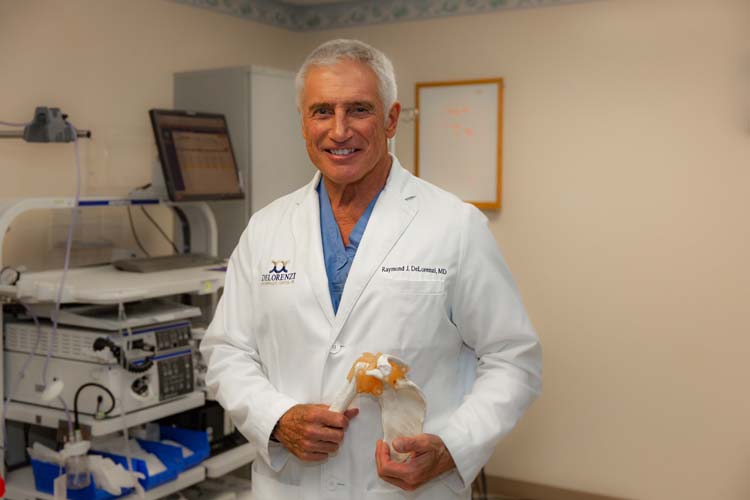The human shoulder is something of a paradox.
It provides a far greater range of motion than any other joint in the body and it is in near-constant use each and every day, and yet the number of shoulder repair or replacement surgeries performed in this country is tiny compared to the number of knee and hip procedures.
“For every 100 total knee and total hip replacements, you’re probably only doing 10 shoulder replacements.” says Dr. Ray DeLorenzi of First Choice Medical Group and Steward Health’s Sebastian River Medical Center, a board-certified orthopedic surgeon with some 25 years of surgical experience.
Why?
“It’s the mechanics of the shoulder,” DeLorenzi explains, that make it so resilient. “Because it has so much range of motion, it can tolerate a significant loss of that motion before people seek treatment.
“Number two, it’s not a weight-bearing joint so you’re not going to have the forces of gravity or weight on the shoulder joint so that doesn’t produce a significant amount of stress in the shoulder like it does in the hip and knee.
“Number three, it’s the least of the three major joints of the extremities that is injured by trauma,” adds DeLorenzi, who certainly knows something about trauma, having a previous career as a professional hockey play.
Drafted by the Chicago Blackhawks of the National Hockey League, he also played briefly for the Calgary Cowboys and Vancouver Blazers in the World Hockey Association before skating full time into his orthopedic career.
According to the American Academy of Orthopaedic Surgeons, “the shoulder is a ball-and-socket joint. It is made up of three bones: the upper arm bone or humerus, the shoulder blade or scapula and the collarbone or clavicle.”
The ball at the top end of the arm bone fits into the small socket or glenoid of the shoulder blade to form the shoulder joint.
While it is remarkably resilient, the shoulder is nonetheless subject to the effects of injury and aging.
Bursitis, tendinitis, tendon tears, arthritis, fractures, rotator cuff tears, infections, tumors and nerve-related issues can all contribute to shoulder problems.
“If you take everybody over the age of 70 and you put them in an MRI scan, they’re all going to have rotator cuff problems,” says DeLorenzi. “All of them – because of the degenerative blood flow to the cuff as you get to be about 60 years old. But only about 70 percent of them will actually need surgery.” Which means almost a third do not. And surgery, in shoulder cases, doesn’t necessarily mean “replacement.”
In fact, it rarely means replacement.
“Ninety percent of the shoulder surgeries that we do,” DeLorenzi says, “are not shoulder replacements. They’re rotator cuff repairs, cartilage or labral repairs, decompressions [and] ligament reconstructions.”
These surgeries have a good rate of success, according to DeLorenzi. “If you have a reconstruction of the shoulder for either a labral injury, cartilage injury or a cuff injury or a soft tissue injury, your chances are about 75-to-80 percent that you can get back to the pre-injury level,” he says.
With his sports background, DeLorenzi enjoys working with local high school athletes, but he has “a bone to pick” with the coaching some young players receive, especially baseball pitchers.
“The biggest problem right now we have in shoulders of young pitchers is they’re not taught [the proper] mechanics. They’re just taught to throw as hard as they can, and the harder you throw and the faster you throw, the more susceptible the shoulder is to injury,” he says.
With such a wide range of shoulder problems, procedures and patients, DeLorenzi says recovery times after shoulder surgery can vary widely. Depending on the procedure and the extent of the damage, patients can take as little as four weeks or as long as six months or more to fully heal.
Dr. Ray DeLorenzi’s primary office is at 709 S. Harbor City Blvd., Suite 100 in Melbourne. The phone number is 321-725-2225.

